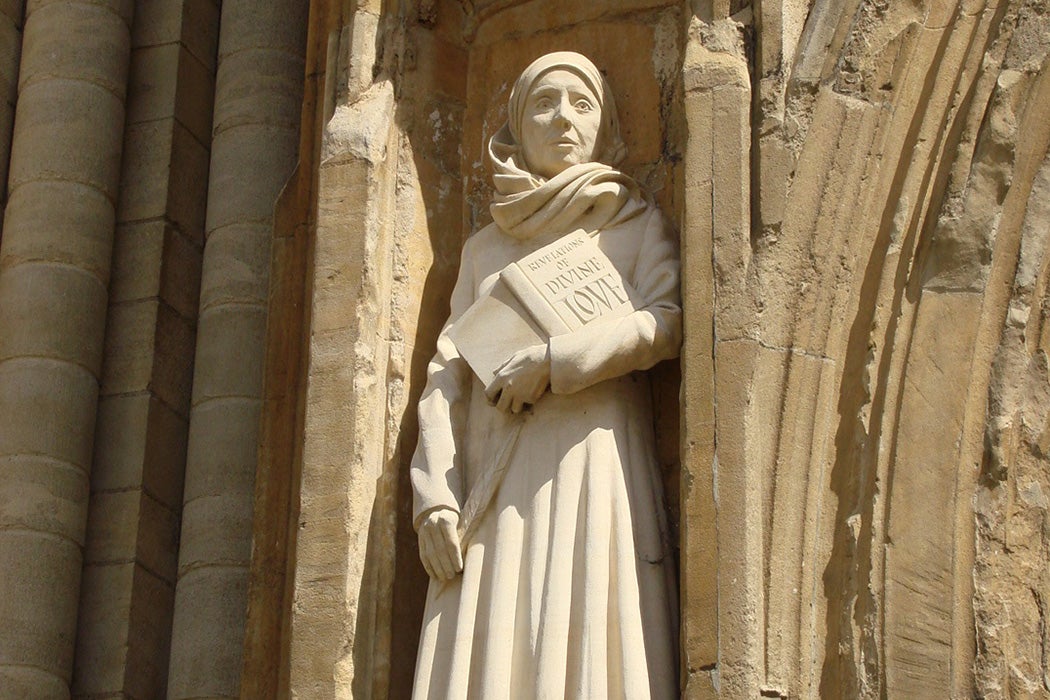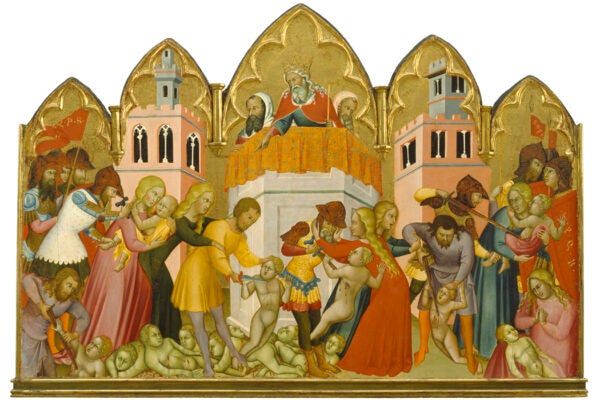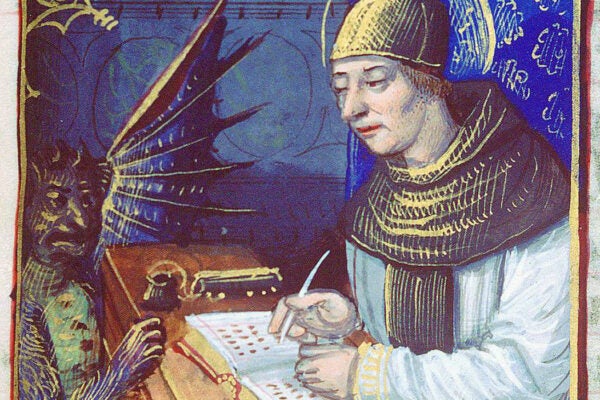Julian of Norwich may be one of the most captivating women of the Middle Ages, yet we know surprisingly little about her life. Although the details of her biography are scant, we can be certain she lived for years as an anchoress. There is also no doubt that in 1373, at the age of 30, she fell dangerously ill. Upon receiving her last rites, and seemingly on the brink of death, Julian experienced a series of visions (or, what she called shewings) of Christ that not only cured her, but also compelled her to write. She went on to author two first-person accounts about her mystical experiences, which today are collectively known as the Revelations of Divine Love—the earliest surviving book in English written by a woman.
Scholars have long acknowledged the uniqueness and significance of the so-called Short Text and Long Text that make up Julian’s single work, particularly at the theological level. Strikingly, she characterizes Christ as a mother, likening divine love to maternal love. “The mother can give her child to suck of her milk,” she writes, “but our precious Mother Jesus can feed us with himself, and does, most courteously and most tenderly, with the blessed sacrament” of the Eucharist. As medievalist Denise N. Baker observes, Julian also explains “God’s apparent withdrawal” from the world along maternal lines, “as a pedagogic strategy for teaching the faithful to seek and trust him.” We see this in the following passage:
And if we do not then feel ourselves eased, let us at once be sure that [Jesus] is behaving as a wise Mother. For if he sees that it is profitable to us to mourn and to weep, with compassion and pity he suffers that until the right time has come, out of his love. And then he wants us to show a child’s characteristics, which always naturally trusts in its mother’s love in well-being and in woe.
To the unknowing reader, this extended metaphor might seem somewhat unusual and idiosyncratic. However, a closer look at the religious literature of Julian’s time suggests that the image of Christ as a nursing and teaching mother had some precedent. As Baker points out, there are “many Scriptural references to Christ nourishing the faithful.” Additionally, between the twelfth and fourteenth centuries, two of the most important guides for anchoresses—Aelred of Rievaulx’s De institutione inclusarum (The Formation of Anchoresses, published circa 1162) and the anonymously authored Ancrene Riwle (Guide for Anchoresses, published circa 1220)—contained references to a maternal Christ as well. Given their popularity and Julian’s status as an anchoress, it is likely she was familiar with these two texts.
Weekly Newsletter
Taken together, Julian’s depictions of Christ as a mother evoke a deeply caring and protecting God. In Baker’s words, this “refusal to attribute the human emotion of wrath to the Deity, despite her acknowledgement of human sinfulness, epitomizes Julian’s tempering of the penitential asceticism of the anchoritic tradition.” Julian also strayed from this tradition in another meaningful way. In accordance with the word “anchoress,” which comes from the Greek anachorein and means “to withdraw,” Julian spent decades alone in a tiny cell, where she had minimal contact with the outside. Yet, through her sophisticated writings and engagement with theology, she remained part of the world.
Support JSTOR Daily! Join our new membership program on Patreon today.







